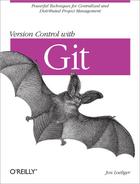The following typographical conventions are used in this book:
- Italic
Indicates new terms, URLs, email addresses, filenames, and file extensions.
Constant widthUsed for program listings, as well as within paragraphs to refer to program elements such as variable or function names, databases, data types, environment variables, statements, and keywords.
Constant width boldShows commands or other text that should be typed literally by the user.
Constant width italicShows text that should be replaced with user-supplied values or by values determined by context.
Tip
This icon signifies a tip, suggestion, useful hint, or a general note.
Warning
This icon indicates a warning or caution.
Furthermore, you should be familiar with basic shell commands to manipulate files and directories. Many examples will contain commands such as these to add or remove directories, copy files, or create simple files:
$cp file.txt copy-of-file.txt$mkdir newdirectory$rm file$rmdir somedir$echo "Test line" > file$echo "Another line" >> file
Commands that need to be executed with root permissions appear with a sudo operation:
# Install the Git core package
$ sudo apt-get install git-coreHow you edit files or effect changes within your working directory is pretty much up to you. You should be familiar with a text editor. In this book, I’ll denote the process of editing a file by either a direct comment or a pseudocommand:
# edit file.c to have some new text
$ edit index.html